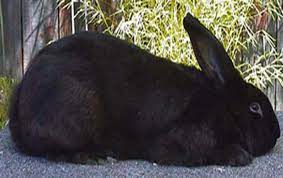Glossary of terms;
Phenotype An observable or measurable trait of an individual.
Gene The basis unit of heredity that consists of a DNA sequence at a specific location on a chromosome.
Allele Alternative form of gene that differs in DNA sequence; synonomous with genetic variant.
Genotype A list of the alleles present at a particular gene of interest or in the individual organism as a whole.
Heterozygosity; Having two different alleles for a particular gene.
Homozygosity; Having two identical alleles for a particular gene.
Dominance; The expression of alleles of a single, heterozygous gene where one allele has more effect on the phenotype than the other.
Wild Type; Refers to the original alleel or phenotype, meaning prior to domestication or before a mutation created a different allele.
Prunnett square; A grid used to determine the potential offspring of a specific mating pair. This form of prediction can be used to determine the genotype ratio of the offspring. A simple Prunnett square is a nine-square grid but can increase to a much larger sized depending on the pairings and the number of genes under consideration.


Each coat color gene codes for a specific aspect like; color base, color density, pattern, extension of dark pigment, white spotting, or silvering.
Additivity Some genes have alleles that act in an additive fashion. That means that these genes play a large role in quantitative traits like body weight. The weight of a rabbit depends on its genetics and contributions from its environment such as feed quality and how many mates it shares with. Here is the example.
Let’s make weight W and w. A rabbit with genotype ww weighs 1 oz less than the average 12 week old rabbit. A Ww rabbit weighs the same as the average. A WW rabbit weighs one oz more. That means ww would reflect a low weight.
Dominance Dominant recessive alleles work as follows. If B is for black and b is for brown and our rabbit has a Bb its fur will be black. That would be a heterozygous rabbit. A BB would be homozygous and it will be black. A bb will be homozygous and it will be brown. Fur type and color are qualitative traits. Weight is a quantitative trait. The breakdown of the parents genes will tell us what the offspring will be. With a BB breakdown between both parents the offspring will be BB. If there is a Bb on either side the ratios obviously change to a 25%/50%/25%.
EpistasisThis is when the phenotypic expression of the genotype of one gene is dependent on the genotype of one or more other genes.
Rabbit coloring is determined by color base, color density, pattern, extension of dark pigment, spotting and silvering. The genes that are known are A,B,C,D, & E.
The B gene is TYRP1 tyrosinase related protein 1. It controls the coat base color. It has two know alleles B & b. This gene demonstrates complete dominance with the B being dominant and the b being recessive. The B is black and it is considered a wild gene and the b is brown.
The D gene known as MLPH melanophilin gene, controls the density of the coat color. The D allele contributes a dense coat color, meaning hte base coat color will appear according to the b gene genotype. The d allele represents a dilute coat color meaning this will affec teh coat based on the B gene. When a rabbit has a dilute genotype dd, a black base will appear as blue and a chocolae base will appear as lilac. The D allele is considered the wild-type gene.
